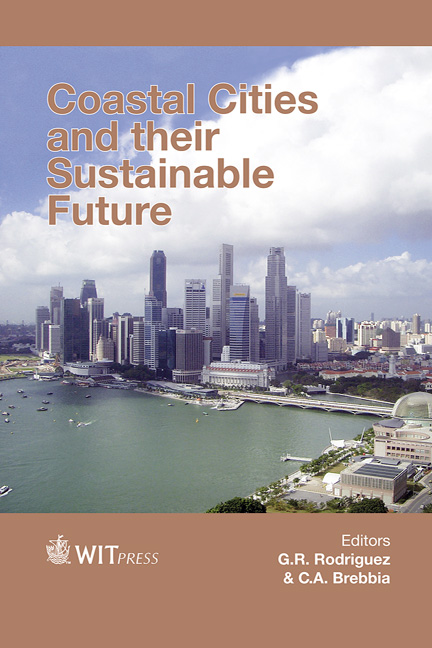Vulnerability Assessment As A Support For A Sustainable Coastal City: A Case Study Of La Paz, Mexico
Price
Free (open access)
Transaction
Volume
148
Pages
12
Page Range
25 - 36
Published
2015
Size
1,200 kb
Paper DOI
10.2495/CC150031
Copyright
WIT Press
Author(s)
A. González-Baheza, O. Arizpe
Abstract
Coastal zone (CZ) and adjacent land areas supports more than 50% of human population and eight of the top ten largest cities in the world. They are exposed to natural hazards and climate change induced stresses, which have led to focus as a relevant issue, the assessment of its vulnerability in many regions of the planet. Assessment and monitoring of vulnerability models in CZ should be able to influence the environmental policies, and guiding decision makers to provide the main elements for the sustainability of any coastal city. The case of study La Paz (CS) is the capital city of the biggest coastal extension state of Mexico. CS was regionalized based on biotic, natural landscape and socio-economic factors within geographic information systems, obtaining 74 environmental units (EnvU). Assessment on each EnvU with a coastal vulnerability model, used physical, environmental and socio-economic indicators and integrated indices, considering three main elements: a fixed component defined by Coastal Vulnerability Index (CVI) = Pressure Index (PI) + Fragility Index (FI). Nearly 38% of EnvU and over 60% of CS showed high and very high FI, including capital city. Only 7% of EnvU and 14% of CS presented high and very high PI. Nearly a third of EnvU had high and very high CVI, mainly on La Paz and southwest of CS without actual human pressure, but lower slopes and high-energy streams. Results allow focusing efforts on environmental policy instruments to implement adaptation measures to sustainability of the CS.
Keywords
vulnerability model, coastal zone, climate change, natural hazards, pressure index, fragility index, indicators





